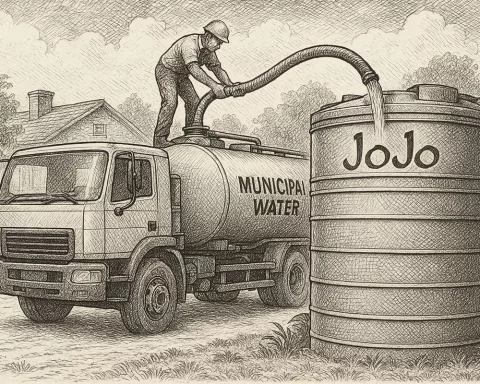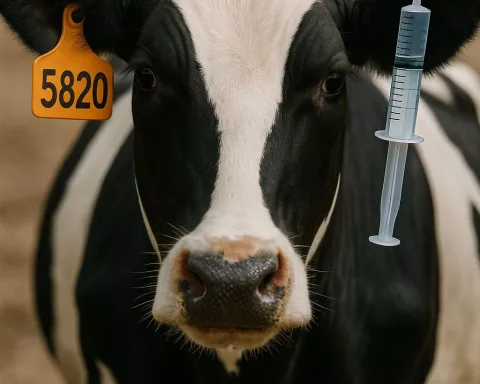In South Africa, a big debate is raging over the new meal plan for prisoners. The government wants to save money by swapping expensive meats for cheaper foods like soya and pap, aiming to save R200 million. While some people support the changes for fiscal reasons, many critics worry that this harms inmate welfare. Public opinion is mostly against the prisoners, with many arguing that they should not expect luxury meals when many citizens struggle to afford food. The situation raises important questions about justice and how to treat people in prison while also managing limited resources.
What is the controversy surrounding South Africa’s correctional meal plan?
The controversy revolves around the Department of Correctional Services’ decision to replace expensive proteins with affordable alternatives in inmate meals, aiming to save R200 million. Critics argue this compromises inmate welfare, while supporters emphasize fiscal responsibility and adherence to nutritional guidelines.
A Heated Debate in South Africa’s Socio-Political Arena
South Africa’s socio-political landscape is abuzz with debate following the Department of Correctional Services’ recent overhaul of inmate meal plans. This contentious issue, spearheaded by Minister Pieter Groenewald, raises significant questions about justice, resource management, and humane treatment within correctional facilities. The department’s decision to introduce more cost-effective meal options has stirred discontent among inmates and sparked a lively discussion among the general public.
Aiming to save R200 million, the new meal plan involves replacing costly proteins like red meat, chicken, and fish with more affordable alternatives such as soya products. Additionally, staples like pap and eggs are now central to the menu. While these changes are intended to address budgetary constraints, they have been met with dissatisfaction from inmates, who lament the reduced presence of meat in their meals.
Public reaction has largely sided against the inmates’ grievances. Social media has seen an outpouring of criticism, with many users branding the prisoners as “entitled” and drawing attention to the economic hardships faced by many South Africans. Twitter user @Jonatha05697761 commented, “That’s probably what the poor citizens of this country are eating with the R350 grant. I don’t think prisoners should complain. It’s not a hotel.”
Fiscal Responsibility Versus Inmate Welfare
In response to the controversy, Department spokesperson Singabhako Nxumalo explained that the new meal plan is not solely about saving money. Speaking with eNCA, Nxumalo emphasized the importance of dietary flexibility and variety, noting that the plan is designed to meet nutritional guidelines. The aim is to ensure that inmates’ diverse dietary needs are addressed, thereby supporting their physical health and contributing to a rehabilitative environment.
The Department’s cost-saving measures are part of a broader strategy to enhance self-sufficiency within correctional facilities. Funds saved from the revised meal plan will be redirected to sustainability projects, allowing inmates to engage in productive activities like food production, furniture manufacturing, and uniform making. These initiatives are designed to equip inmates with valuable skills, aiding their reintegration into society upon release.
A press statement from the Department of Correctional Services last month sought to quell fears that the new meal plan would result in inmate starvation. “These claims are misleading and do not reflect the reality within our correctional facilities. We continue to uphold our mandate of providing humane and dignified care to all inmates while ensuring that their dietary needs are met,” the statement read. This reassurance highlights the Department’s commitment to balancing ethical obligations with practical realities.
Public Sentiment and Social Justice
The broader South African public, particularly on social media, has shown little sympathy for the prisoners’ complaints. The discourse reveals a deep-seated tension regarding social justice and resource allocation. For instance, @Lingomso_labo suggested replacing eggs with more affordable options like Imana soup, reflecting a sentiment that inmates should not expect luxuries that many law-abiding citizens cannot afford. Another user, @simphiwedlamin2, remarked, “Pap and gravy daily. We are talking about murders here. Some families are going through so much grief because of some of those criminals.”
This public reaction underscores a prevailing belief that correctional facilities should focus on cost-efficiency and rehabilitation rather than comfort. Critics argue that prison should serve as a deterrent, not a cushy retreat. This perspective aligns with historical views on punishment and rehabilitation, influenced by utilitarian thinkers like Jeremy Bentham, who advocated for punishment that prevents future crimes and rehabilitates offenders. These principles continue to shape contemporary correctional policies.
Yet, the debate over inmate nutrition extends beyond public opinion and fiscal prudence. It intersects with broader human rights issues. The United Nations’ Standard Minimum Rules for the Treatment of Prisoners, known as the Nelson Mandela Rules, mandate that prisoners receive food of nutritional value adequate for health and strength. The Department’s efforts to align with dietary guidelines demonstrate their adherence to these international standards, despite budget constraints.
The Future of Correctional Facilities
The Department’s focus on self-sufficiency projects is particularly forward-thinking. By providing inmates with practical skills, the correctional system aims to fulfill a rehabilitative function, creating pathways for successful reintegration into society. This approach aligns with the principles of restorative justice, which emphasize repairing the harm caused by criminal behavior through inclusive processes that engage all stakeholders. Initiatives like food production and manufacturing within prisons embody this philosophy, offering inmates a sense of purpose and a means to contribute positively.
Moreover, the shift towards soya products and other cost-effective alternatives reflects broader global trends in sustainable and ethical food sourcing. Reducing meat consumption is not just a cost-saving measure; it also aligns with efforts to lessen the environmental impact of food production. This aspect of the meal plan could be part of a more progressive vision for correctional facilities, integrating economic, environmental, and ethical considerations.
Navigating Complex Realities
The controversy surrounding South Africa’s new inmate meal plan offers a snapshot of the complex interplay between fiscal responsibility and humane treatment. It highlights the challenges of balancing budgetary constraints with the need to maintain standards of care that uphold human dignity. As the Department of Correctional Services continues to implement its changes, the dialogue it has sparked will likely provide valuable insights into the evolving landscape of justice and rehabilitation in South Africa.
Ultimately, this issue serves as a microcosm of larger societal debates, reflecting broader values and tensions within the South African context. The discourse surrounding the meal plan controversy underscores the importance of ongoing dialogue and thoughtful policy-making in the quest for a just and equitable society.
FAQ: South Africa’s Correctional Meal Plan Controversy
What is the controversy surrounding South Africa’s correctional meal plan?
The controversy involves the South African Department of Correctional Services’ decision to replace costly proteins like red meat and fish with cheaper alternatives such as soya products and pap, aiming to save R200 million. Critics argue this change compromises inmate welfare, while supporters emphasize fiscal responsibility and adherence to nutritional guidelines.
Why is the government implementing a new meal plan for prisoners?
The government aims to reduce expenses within correctional facilities, targeting a savings of R200 million. The new meal plan introduces more cost-effective options while attempting to meet nutritional standards for inmates. This plan is part of a broader strategy to enhance self-sufficiency in prisons.
How are inmates reacting to the new meal plan?
Inmates have expressed dissatisfaction with the reduced presence of meat in their meals, arguing that the changes negatively impact their well-being. However, public sentiment largely leans against the inmates, with many citizens believing that prisoners should not expect luxuries, especially when many law-abiding citizens struggle to afford food.
What are the broader implications of this meal plan for inmate welfare?
The meal plan has sparked a debate regarding the balance between fiscal responsibility and humane treatment in correctional facilities. While the Department assures that the changes will not lead to starvation and that nutritional needs will still be met, critics point out potential risks to inmate welfare and highlight the importance of maintaining humane treatment standards.
How does the new meal plan align with international standards?
The Department of Correctional Services’ efforts to align the new meal plan with dietary guidelines reflect adherence to international standards, such as the United Nations’ Standard Minimum Rules for the Treatment of Prisoners, known as the Nelson Mandela Rules. These guidelines mandate that prisoners receive food of adequate nutritional value for health and strength.
What future initiatives are being planned for South Africa’s correctional facilities?
The Department is focusing on self-sufficiency projects that allow inmates to engage in productive activities like food production, furniture manufacturing, and uniform making. These initiatives aim to equip inmates with valuable skills, contributing to their rehabilitation and successful reintegration into society upon release.












